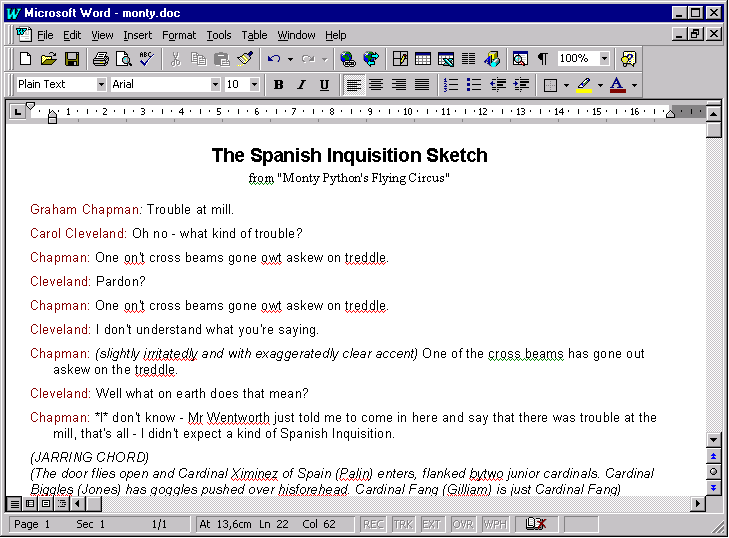| Element | Function |
| menue bar | all functions in several levels of submenues and option windows |
two symbol bars |
quick access to the most important functions |
text area |
used like in an editor |
status line |
information about the document (e.g. size, actual page) |

| Icon | Function |
| new, open, save document | |
| print the document | |
| undo the last action(s) | |
| display the document in another size | |
| change type of font or size of font used | |
| switch to boldface or italics | |
| align left/right, centered, justify | |
| text color |
This is the arena of layout systems like LATEX.
![]()